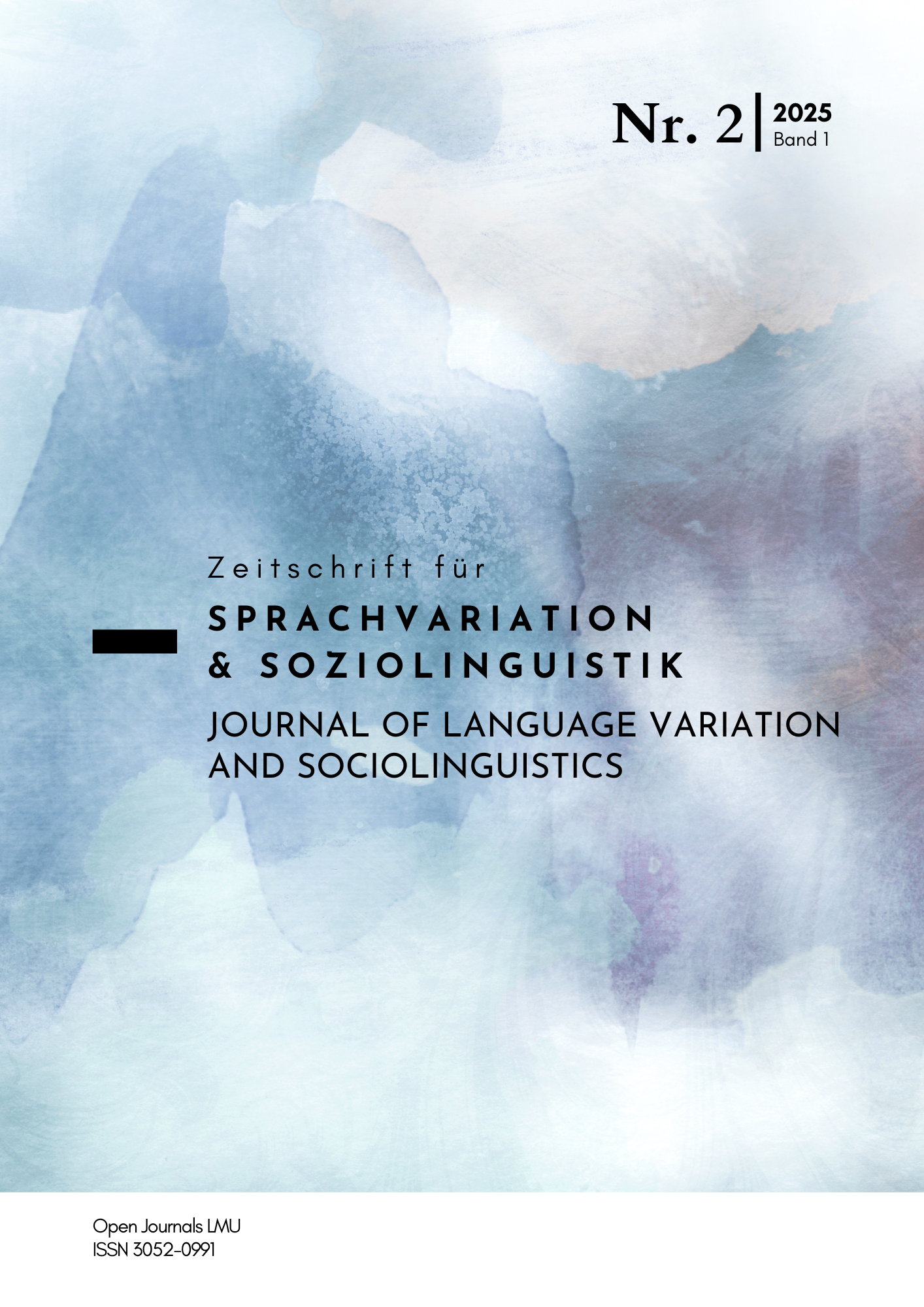Variation und Wandel im ostfälischen Hochdeutsch: Abbau, Zunahme und Hyperkorrektur lautlicher Merkmale
DOI:
https://doi.org/10.5282/jlvs/13

Abstract
The paper examines variation and change in seven phonetic variables (ä-raising, long/short vowels, ɪ-rounding, g-spirantization, final -ig, final -ŋ, pf-deaffrication) in spoken Eastphalian High German. The quantitative sociolinguistic analysis of 36.615 word tokens (n=269 word types) from 10 Eastphalian cities (including Braunschweig, Celle, Einbeck, and Hannover) reveals different changes in an apparent-time comparison. While certain Low German-based variants such as g-spirantization (We[ç] ‘path’, Zu[x] ‘train’) or final -ŋ (Bildu[ŋk] ‘education’) decline significantly with younger age, other variants such as ɪ-rounding (F[ʏ]sch ‘fish’, w[ʏ]rd ‘becomes’), pf-deaffrication ([f]erd ‘horse’) or final -ig (richt[ɪk] ‘right’) increase significantly with younger age. The dynamics of current spoken Eastphalian High German are thus characterised by both a tendency towards decline and an expansion of regional language features, which is partially accompanied by hypercorrections such as [pf]luss ‘river’ or hässl[ɪk] ‘ugly’. The variation is also characterised by lexeme-related and individual differences. For certain variables, the education or gender of the individuals, different survey methods, and specific linguistic contexts also play a key role.
Keywords
Eastphalian High German, language variation and change, regional languages, phonetics and phonology, hypercorrection
